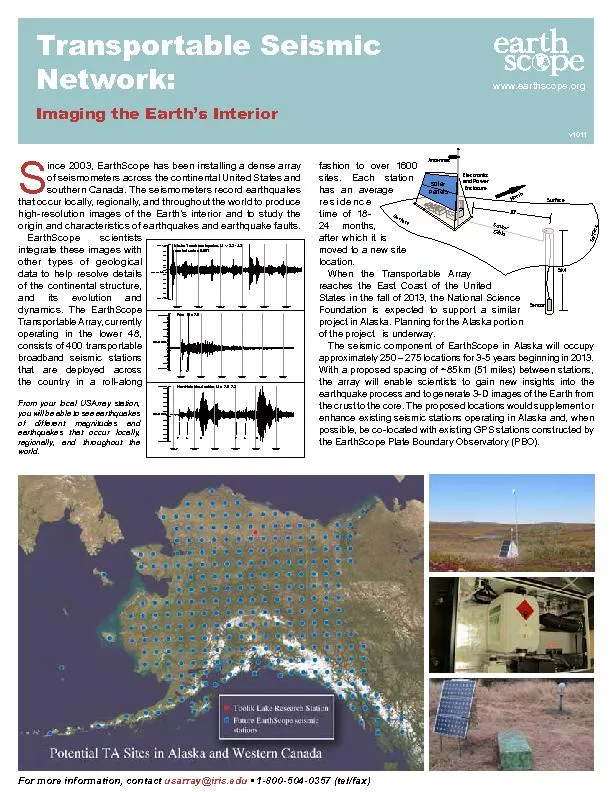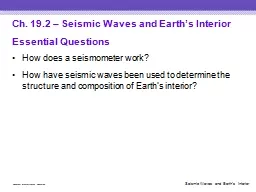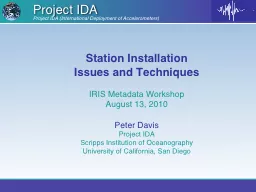PDF-Transportable SeismicNetwork:Imaging the Earth’s Interior ...
Author : liane-varnes | Published Date : 2016-08-15
wwwearthscopeorgFor more information contact usarrayirisedu x2022 18005040357 telfaxv1011ince 2003 EarthScope has been installing a dense array of seismometers across
Presentation Embed Code
Download Presentation
Download Presentation The PPT/PDF document "Transportable SeismicNetwork:Imaging the..." is the property of its rightful owner. Permission is granted to download and print the materials on this website for personal, non-commercial use only, and to display it on your personal computer provided you do not modify the materials and that you retain all copyright notices contained in the materials. By downloading content from our website, you accept the terms of this agreement.
Transportable SeismicNetwork:Imaging the Earth’s Interior ...: Transcript
Download Rules Of Document
"Transportable SeismicNetwork:Imaging the Earth’s Interior
..."The content belongs to its owner. You may download and print it for personal use, without modification, and keep all copyright notices. By downloading, you agree to these terms.
Related Documents














